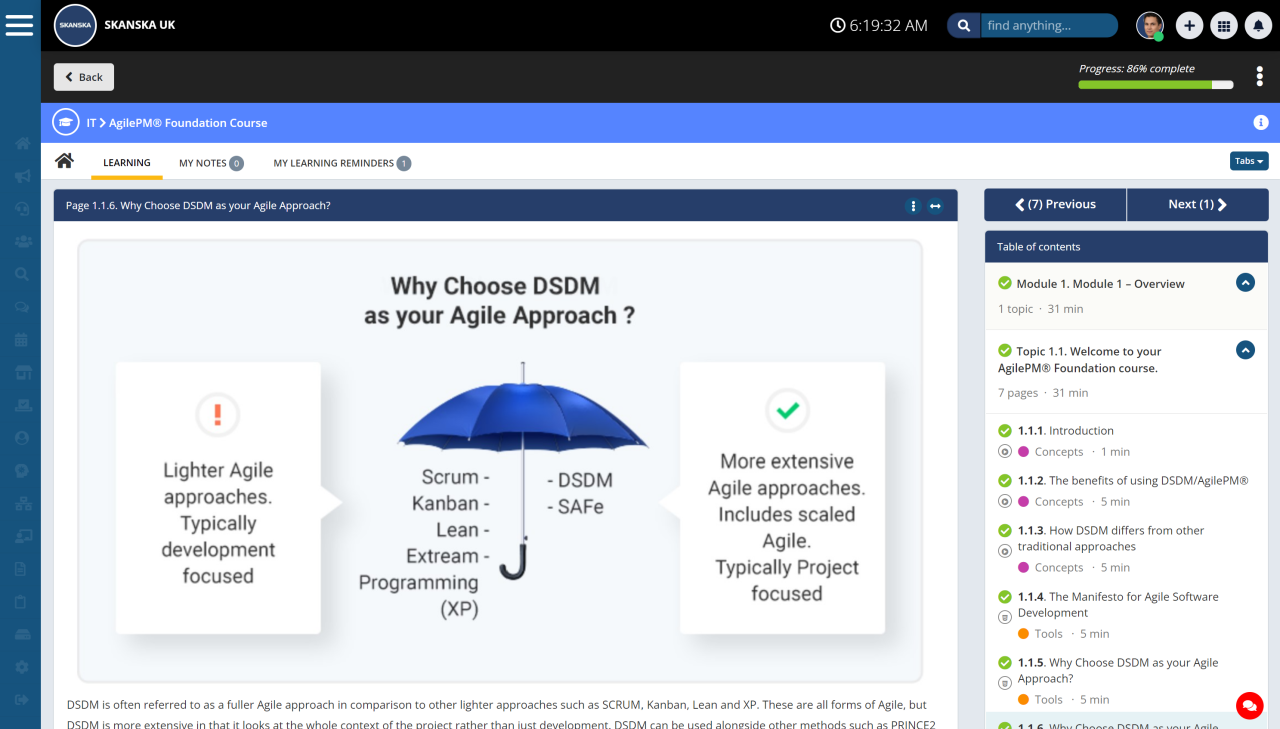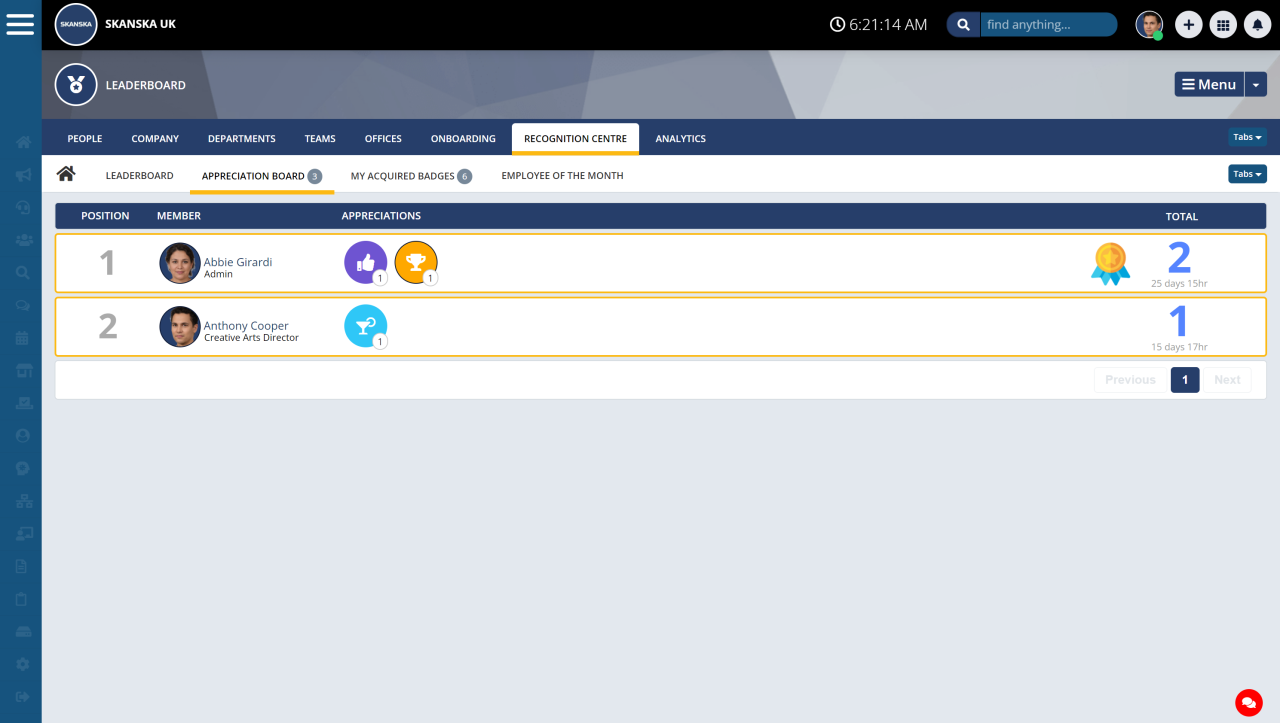Insight Blog
Agility’s perspectives on transforming the employee's experience throughout remote transformation using connected enterprise tools.
7 minutes reading time
(1416 words)
Digital workplace: How employers can integrate learning in remote workplaces?
In addition to radically changing our daily lives and health system, Covid-19 has greatly disrupted the organisation of companies, which have been forced to make remote working the new norm without necessarily being equipped with the right tools.
People are afraid of change, and it is one of the most prevalent fears humans must confront. The motivation and productivity of an employee can be greatly affected by a simple change in the corporate structure or the introduction of new software. People who don't consider the influence of change on their workplaces are more likely to be disengaged in their jobs and less likely to accept new technological tools as well.
Change management can be defined as the process of overseeing and coordinating a company's ongoing evolution. Effective change management may be built in many ways, but none is as basic as improving the level of openness and cooperation among your employees.
The percentage of people in the United Kingdom who took an online course jumped from 4% in 2007 to 17% in 2019 (Statista). A big part of this increase can be ascribed to the advancement of technology that allows for engaging online training programs for employees.
There was a time when learning in the office meant a day out to a corporate training facility or a day in a conference room where a traveling trainer gave instructions.
There were many workplace training and development programs that were dull and uninspiring before the advent of online learning for employees.
Traditional learning vs. learning in the digital workplace
Traditional training methods, such as instructor-led training, were used by many organizations prior to the widespread adoption of online learning.
A corporate trainer would spend the day giving presentations, handing out training materials, leading group workshops, and fielding questions from the audience.
A written test or exam may be required at the conclusion of the training course, depending on the provider.
Digital workplace training, on the other hand, does not necessitate a fixed location. Your company's intranet platform is usually the best place to find all of your training courses and teaching resources.
There are Wi-Fi-enabled devices everywhere, so digital workplace learning is accessible to all employees, regardless of where they work or where they are located.
Using modern teaching methods like gamification, Capterra found that digital workplace learning boosts course content retention by 83%.
Benefits of integrating learning in the digital workplace
Investing in integrating learning in the digital workplace has become a common practice for many businesses. When it comes to supporting technology, including managed services, it is becoming more and more affordable and easy to execute. In addition, there are numerous advantages to using the learning at work framework.
- One of the most important things you can do to keep your best and brightest on board is to provide them with the assistance they need to succeed.
- Your bottom line is boosted, and performance goals are met more rapidly with a well-trained and competent team.
- It's impossible to teach everyone the same thing, but with the help of digital technology, you can tailor your classes to each individual student's needs.
- Online alternatives allow learners to learn when and where they prefer and tailor settings to maximize outcomes.
Gamification, as we discussed earlier, has a significant impact on employee learning. The finest intranet software should contain gamification components such as interactive quizzes, employee rewards, points systems, and certificates to tap into the desire of employees to continue and learn more.
Teams may quickly access additional training materials, such as knowledge management software and file-sharing, by using your digital workplace to manage employee learning. As a result, course completion rates and employee satisfaction should rise as a result of this approach.
Additionally, your digital workplace is home to social intranet programs like internal communications feeds and corporate social networks, allowing employees to engage with their coursemates or get in touch with their tutors.
Digital workplace learning and COVID-19
An increasing need for digital learning at work was already present before this year's epidemic, with 82% of senior company leaders and 71% of end-users reporting an increase in demand.
To put it another way: The epidemic, according to WEF, has "advanced the future of work." Approximately 85 million employees will be lost by the year 2025 as a result of this.
Those with critical thinking skills, originality, and adaptability, on the other hand, will see new openings.
The World Economic Forum predicts that data, artificial intelligence (AI), content development, and cloud computing will all be in high demand in the next years, fueling the growth of digital workplace learning.
Possible ways to integrate learning in the digital workplace
Employees have access to a wide range of information and communication techniques in a digital office environment. This can help you to save a lot of time. A user can access everything they need from a single interface, rather than having to constantly move between several programs.
Many of today's businesses rely on high-end software. Due to a lack of product knowledge, their staff often only utilize a small portion of the system's capabilities, which is a shame. Untrained employees may also face a learning curve when it comes to new technology.
Chat-based systems can be difficult to adapt to, for example, if a customer service agent has always used email to respond to customers.
Two-thirds of workers have changed occupations due to a lack of training and development, according to research. Creating a learning plan is a wonderful method to identify the areas in which employees are having difficulty. By setting a series of objectives for them to strive toward, you'll be able to boost production while also boosting morale. They'll feel accomplished and more confident after overcoming a challenge and increasing their skill level.
Think about including training sessions in your learning strategy. Online training is an increasingly efficient and cost-effective alternative if you're worried about time or money.
Employee training can even be done through the creation of a company-owned online course. Every employee's needs can be met with a unique learning strategy. This helps foster a positive work environment where learning is encouraged.
Let employees learn every day
A workplace must have a culture of learning if it is to be genuinely successful. The availability of training resources is critical, and you must make sure that your staff may access them at any time. The cloud allows trainees to access files from any device at any time, even if they're on the go.
The best way to learn is via doing. People can set aside time in their schedules to work on their education. Leaders of a team should hold informal discussions with their employees to find out if there are any areas in which they are struggling.
Mindfulness is a great way to get employees in the right mindset to learn. Workers can develop a curious mindset by engaging in mindfulness exercises. They'll be more engaged in meetings, which means they'll be more likely to ask questions and learn more.
Employees are more inclined to seek assistance if they are having difficulty with a particular piece of software.
Asking for help should be a part of everyday life at your place of business. Encouragement of teamwork and knowledge sharing should be promoted. Getting help from coworkers should never be seen as a sign of weakness.
Appreciate your employees
Providing an incentive at the end of a training session increases the likelihood that your employees will complete the training session. This doesn't have to be monetary, but the thought of a raise for the best staff is rarely considered as a negative.
Employees who put in the most effort to learn could be rewarded with prizes or an "employee of the month" system could be implemented.
When a business recognizes and rewards its employees for their efforts to learn, it can have a positive impact on the workplace's culture. Appreciation is the best medicine.
An uninterested staff is a squandered day of production for every company. Change the work ethic of your employees and enhance productivity in your digital workplace by establishing a learning culture now.
Conclusion
You can make a world of difference in your workplace by introducing new ideas. We've only looked at a few of the possibilities. Online training, webinars, training plans, and changes to the office setting are all excellent ways to boost productivity. Employee morale and productivity will rise, and the workplace will become more efficient and effective as a result.
Categories
Blog
(2600)
Business Management
(319)
Employee Engagement
(207)
Digital Transformation
(173)
Intranets
(119)
Growth
(118)
Remote Work
(61)
Sales
(48)
Collaboration
(37)
Culture
(29)
Project management
(29)
Customer Experience
(26)
Knowledge Management
(21)
Leadership
(20)
Comparisons
(5)
Ready to learn more? 👍
One platform to optimize, manage and track all of your teams. Your new digital workplace is a click away. 🚀
Free for 14 days, no credit card required.
















